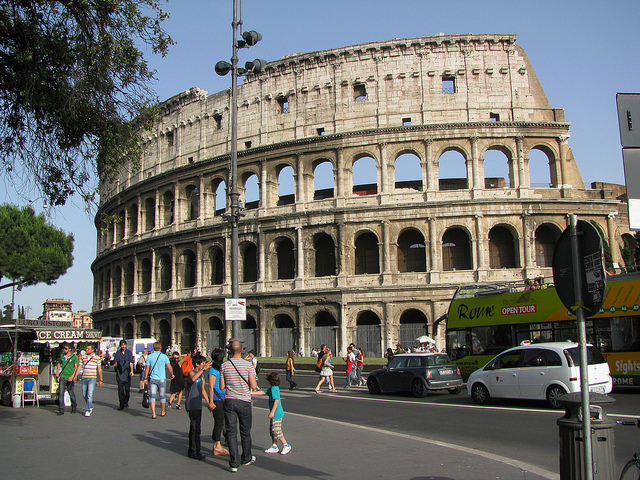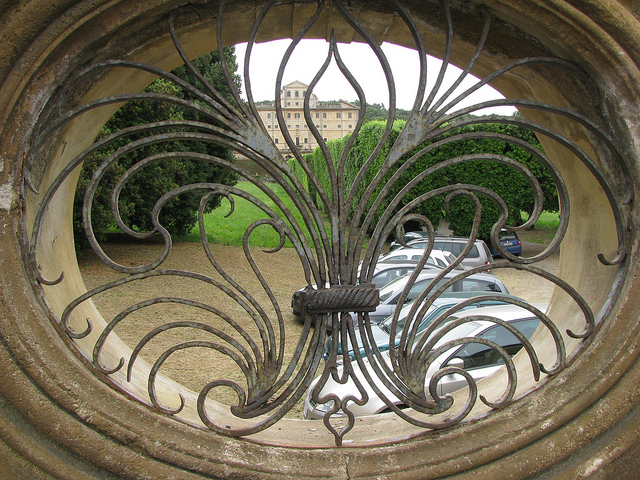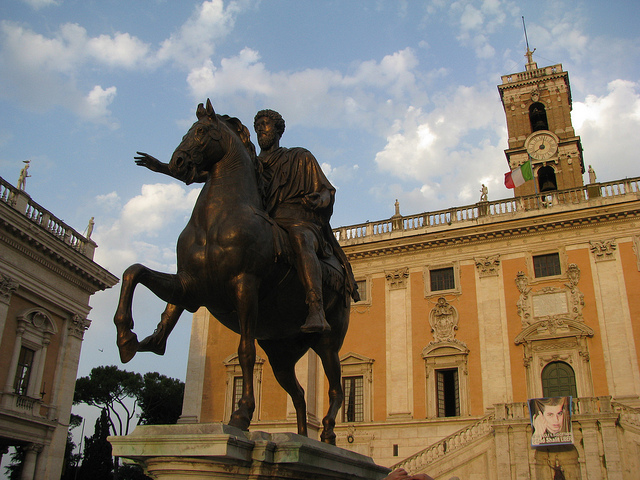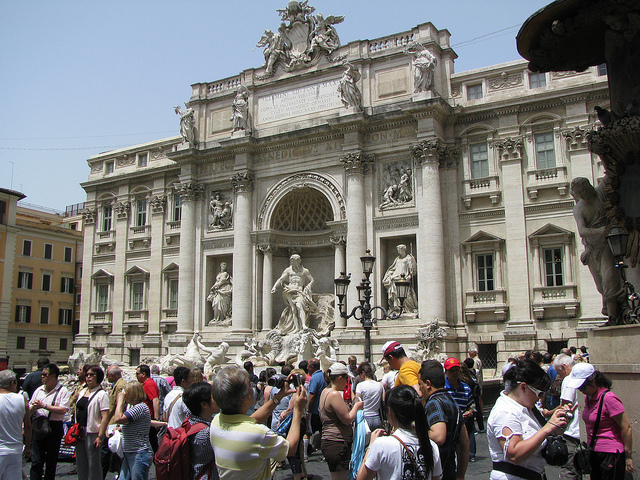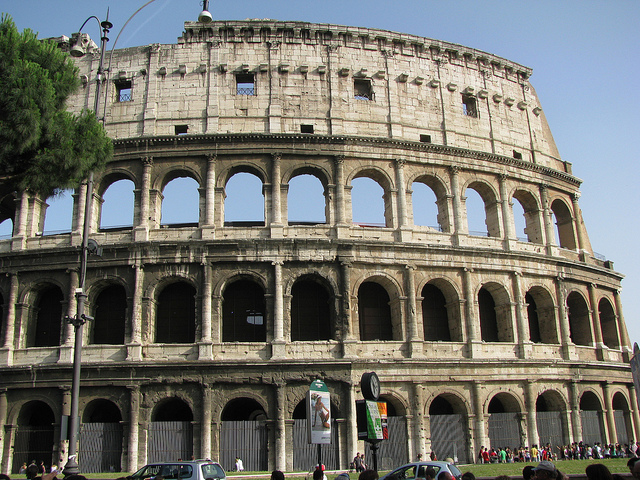I had thoroughly enjoyed my walking tour through Old Rome and marveled at some of the Eternal City’s most popular sights: the Vatican, the Piazza Navona, the Trevi Fountain and the Spanish Steps. I had planned even more sightseeing for today, but this time on two wheels. I made my way over towards the Esquiline Hill and arrived at about 1:30 at the offices of TopBikeRental, from where I was going to take a guided tour of the Ancient Appian Way.

Ciro in his shop, TopBikeRental
Owner Ciro is a former banker who decided to open his own bicycle rental company. His company offers bicycle rentals and guided tours of Rome as well as bicycle excursions outside of Rome in the regions of Lazio and Umbria with six night’s accommodations, breakfast, bicycling equipment, several lunches,dinners and the necessary train tickets. Entrance admissions and guided tours are included as well.

Roberto and Ciro from TopBikeRental
After outfitting me with a comfortable bike Ciro set me up with one of his knowledgeable guides, Roberto. We were joined by Allen, another Canadian traveler from Halifax and the three of us were ready to embark on a biking tour of the Ancient Appian Way. We got started by cycling uphill to the Colle Oppio – the Oppian Hill which is crowned by a park that houses the remains of Nero’s Domus Aurea. Emperor Nero’s Golden House was a huge palace said to have been about 25 times the size of the Colosseum with an artificial lake, gardens and woods. Much of the Domus Aurea has not been exacavated yet.

Roberto explains something on the Oppian Hill
Nero ruled Ancient Rom from 54 to 68 AD and was infamous for his tyrannical style and his extravagance. He went as far as executing his own mother and stepbrother. Nero himself committed suicide in 68 AD and subsequent emperors chose to build over his palace. Emperor Trajan built the Baths of Trajan, an immense complex that measured about 330 x 215 metres.
Roman baths always included a tepidarium (warm water bath), a caldarium (a hot pool with a sauna), and a frigidarium (cold pools used at the end). The lifestyle of the ancient Romans was nothing short of extravagant. Our guide Roberto mentioned that citizens of ancient Rome used about 1000 litres of water a day, which compares to about 500 litres a person today.

The Colosseum – Rome’s most iconic sight
As we cycled further down the hill, Rome’s most iconic sight came into view: the Colosseum, ancient Rome’s colossal amphitheatre, located just east of the Roman Forum. Holding 50,000 spectators, it was the largest such structure ever built in the Roman Empire and was completed in 80 AD. It was most famously used for gladiator games, but also held other public events such as mock sea battles and battle reenactments. Executions were also popular events.

The Colosseum is an important destination for wedding photographers
During medieval times the Colosseum was repurposed and houses were built inside the giant structure as well as churches. At one point the building was even used as a cemetery. During the Renaissance many of its stones were removed for construction projects throughout the city. In the late 16th century Pope Sixtus V even considered to turn the Colosseum into a wool factory while Pope Benedict XIV declared the Colosseum a holy site due to the martyrdom of early Christians. Finally, the substructure of the building was uncovered in the 1930s during Benito Mussolini’s rule.

Moi with the bike in front of the Colosseum
Today, after a major restoration in the 1990s, the Colosseum is one of Rome’s most popular attractions. Although the building has suffered extensive damage over the past 2000 years, it is still an awe-inspiring structure and a true symbol of Ancient Rome’s power. The Forum Romanum was the starting point of the Via Appia, also known as the Appian Way, one of the oldest and most important roads of Ancient Rome. One contemporary writer referred to it as the “queen of the long roads” as it stretched from Rome to Brindisi on the heel of the Italian boot. In addition to being an important military road, it became an important trading route, linking the Capital of Ancient Rome with the Eastern Mediterranean.
We cycled along in the midst of various amounts of traffic, but one thing has to be said: traffic in Rome can be quite hair-raising. But our guide Roberto was really amazing – he would raise his hand, communicate visually with the drivers, and all of a sudden the sea of traffic would part and we would be able to cross the roads, unharmed. Once we got past the busy downtown core, the view opened up into a beautiful park-like setting with mostly flat terrain. Pine trees and cypresses flank the ancient roughly hewn cobble-stoned road. Many portions of the road showed deep longitudinal grooves which are actually ancient chariot marks.

The ancient cobblestones of the Via Appia
